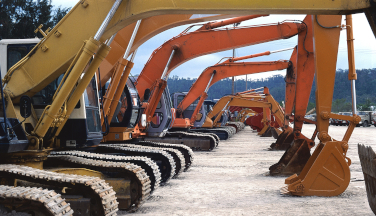Clean Hydraulic Oil Optimizes Equipment Performance
Hydraulic oil advice from POLARIS Labratories®


Keeping your hydraulic system clean will extend equipment life as much as tenfold by removing abrasive particles that wear moving parts. This has become especially important over the last few years since a lack of readily available parts causes extended downtime when breakdowns occur.
Clean oil also reduces waste – the oil resists degradation longer and may not need to be changed as often, avoiding both the cost of new lubricant as well as disposal of the old product. Once your oil is clean, you will also see a decrease in the need to change filters out frequently. Reduced energy consumption will be noticeable as dirty, sticking valves require more force to move, which in turn uses more fuel or electricity.
The challenge:
Equipment is often operated in dirty, dusty, humid environments. This can lead to a lack of buy-in from maintenance employees, as they may incorrectly believe the battle against contamination is one that can’t be won. Lubricants are often environmentally exposed during the process of multiple delivery transfers - from refinery to rail car, to tanker truck, to bulk tank, etc. As a result, while your freshly shipped oil left the refinery clean, it’s now delivered to your site with a level of contamination well over the OEM cleanliness specifications for most equipment.
The solution:
- Designate a Program Champion for your oil analysis program – one person who is responsible for your analysis program
- Take regular samples for oil analysis to monitor cleanliness levels and ensure you are meeting your targets
- Document your contamination control successes, including any savings achieved though proactive maintenance and fix-before-failure
- Recognize your team’s wins and acknowledge involved employees within your company’s internal communication to encourage buy-in amongst your team
In addition, add sample valves to avoid the need to open hydraulic systems to the environment to take the sample. This will ensure the samples are taken without outside contamination that could lead to inaccurate results. The substantial reduction in time consumption and labor costs makes pulling samples via a valve the preferred sampling method to other alternatives.
Install the appropriate filters for your equipment. Referring to your OEM’s specifications is a significant starting point, along with the severity of the environment. Vent plugs can allow dirt and moisture to ingress so it’s important to replace those with desiccant breathers as well.
Lastly, consider purchasing lubricants that are guaranteed to be delivered clean. Using a program like Chevron’s ISOCLEAN® Certified Lubricants can save the time and labor of filtering your own oil by having it delivered certified clean to your OEM’s ISO cleanliness specifications.
Utilizing some of these tips for ensuring the use of clean hydraulic oils from the start can pay dividends in the future by avoiding harmful contamination, unplanned downtime and costly maintenance repairs.
Starting with clean oil and performing routine analysis results in optimized equipment health, increased reliability and steady production.
Polaris Laboratories is part of the Chevron LubeWatch program.
05/14/2024

























